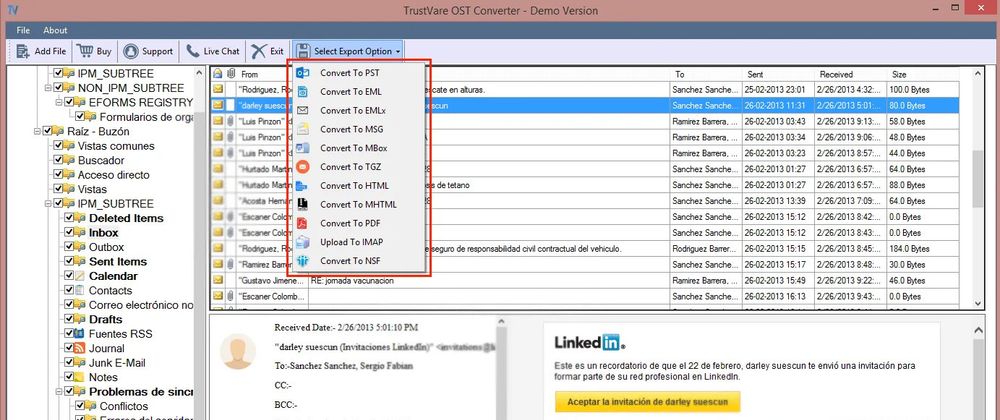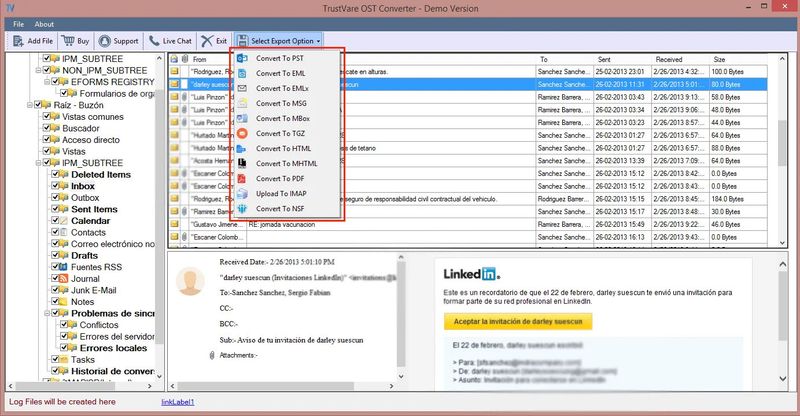I discovered it was an OST file after unintentionally deleting an email on Outlook. The email address has changed. Is there now any way Outlook could import the OST file? I lack the password, hence I am unable to re-add the emails. I kind of find myself here frozen. Every assistance will be much valued.
Do you likewise run across the same problem? If so, then do not lose hope, since the answer to the dilemma is really simple. The paper covers the simple and useful methods for opening OST files in Outlook on all versions. Furthermore, included is a professional solution designed to enable simple OST to PST file type conversion. Thus, let's start.
Motives behind importing OST files into Outlook
The following describes the situations requiring the import of OST file data into Outlook:
- One cannot access the data from the Exchange Server when it crashes and ceases to reply.
- Sometimes the Exchange Server account of the user gets erased unintentionally, and the data cannot be accessed or examined. Under this situation, the Exchange Server data is extracted from the OST file kept on the local PC.
- Should the OST file be corrupt, and the data fall out of grasp?
- Want to open Outlook's OST file for another user?
- Exchange Profile and Server Not Connected.
Manual Techniques to Export Offline OST Files to Outlook
#01Method: create a new PST file with a copy of OST file data.
This method requires Outlook installation and the same current Exchange or IMAP profile.
- Launch Outlook.
- Create an Outlook account's new PST file here.
- Paste the data from the selected OST mailbox into the just-produced PST file.
Note: Just import your PST file into Outlook. Right now you have one.
#02 Method: Outlook Archive Choice to Make OST Significance Meaning
This will generate the PST file, with all the data as in the OST file.
- Starting the Outlook software on the local machine, select File Cleanup Tools Archive.
- Choose a folder or file.
- Go to the spot where you have to save the file and choose OK.
- An archive file generates itself.
#03 Method: Microsoft Outlook's Export Option
- Launch Outlook, then change to the File tab and select Export to move from Outlook.pst 2007.
- Go export to a file and choose next.
- Select the personnel file folder (PST) then, under next.
- Choose the directories to migrate to the PST file as well as a checkbox to incorporate sub-folders.
- Tell me where you intend to save the exported file. Next, click "Finish" to terminate the migration procedure.
Note: Launch Outlook, then choose the Import option.
The Most Convenient Way to Export Offline OST Files to Outlook
The TrustVare OST to PST Converter Tool because it is simple, lacks risk, also is easily installed, and runs on all Windows versions 11, 10, 8.1, 8, 7, and XP. Their interfaces are user-friendly, so the user can readily move their OST files to PST format with just a few clicks without any technical information. The software offers precise results and boasts an advanced level of compatibility. The software is compatible with all versions of Microsoft Outlook. It is appropriate for a wide range of users, including both individuals and businesses. This software functions seamlessly with orphaned OST files. They save the converted PST files in either new or existing folders. The free iteration of the service allows users to convert a limited number of email items per folder.
Producer to follow
- Install and run the OST to PST Converter Tool.
- Add the OST file/folder from the browser option.
- Examine the preview.
- Select the PST as the output type.
- Decide the location.
- Hit the Converter Now button.
The Line of Reference
Frequently, the process of importing an OST file into Outlook necessitates a distinct approach. The post clarifies the top-hand techniques. These workaround techniques have certain restrictions, though. It is thus advised to open the OST file in Outlook directly using a third-party application.





Top comments (0)